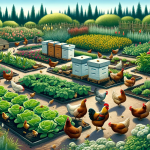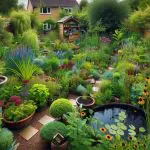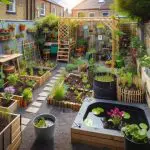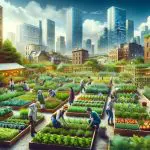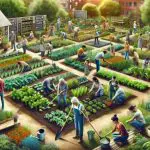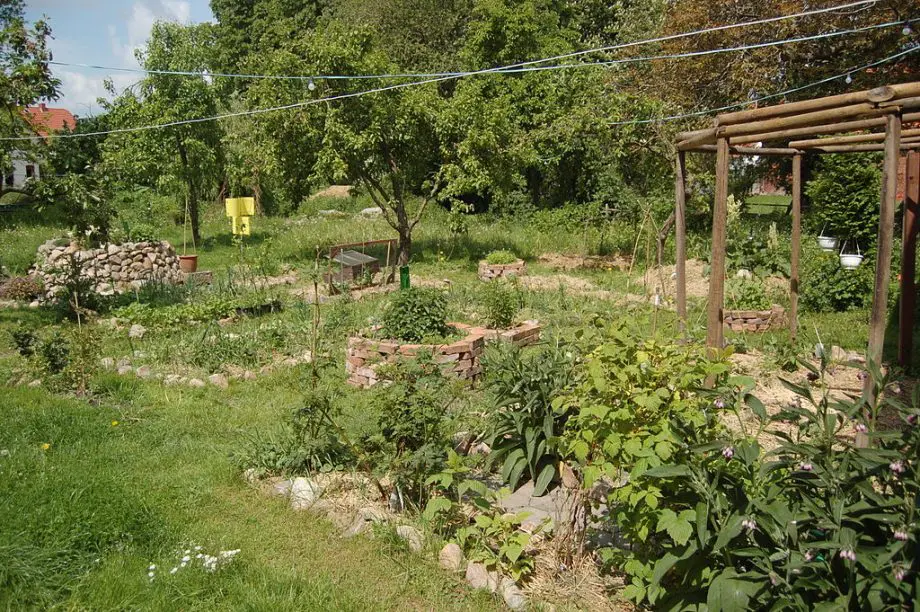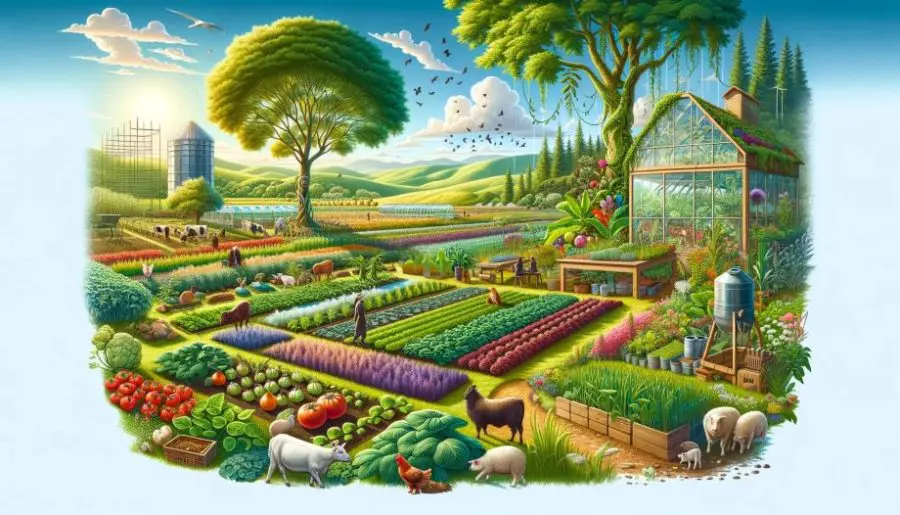
Discover the difference between homesteading and permaculture in our friendly guide. Dive into sustainable living with insights and tips!
Homesteading vs Permaculture Key Takeaways:
- Homesteading focuses on self-sufficiency through tasks like farming and crafting.
- Permaculture is a holistic design philosophy emphasizing sustainable ecosystems and working with nature.
- Both aim for sustainability but differ in methods and community involvement.
Ever wondered about the difference between homesteading and permaculture? You’re not alone!
Join us as we unravel the unique qualities of these two fascinating approaches to sustainable living.
We’ll explore how each one can help you connect with nature in meaningful and fulfilling ways.
What is the difference between homesteading and permaculture?
Exploring the realms of sustainable living often leads us to two key concepts: homesteading and permaculture.
While both pursue the admirable goal of self-sufficiency, they approach it in uniquely different ways.
This article delves into the core of what sets homesteading and permaculture apart, revealing the nuances of each practice.
Whether you’re a budding environmentalist, a seasoned gardener, or simply curious about sustainable living, understanding these two philosophies is crucial in navigating the path toward a more self-sufficient lifestyle.
Homesteading: A Path to Self-Sufficiency

Homesteading embodies the spirit of self-reliance. It’s an all-encompassing lifestyle choice that involves growing your own food, possibly raising livestock, and preserving your harvests.
It also extends to producing your own textiles and crafts. The essence of homesteading lies in its focus on independence, aiming to reduce reliance on external resources.
This practice can take many forms, from urban balconies nurturing heirloom tomatoes to sprawling rural lands with chickens and vegetable patches.
Homesteaders often embrace a DIY ethic, driven by a desire to craft a life that’s both sustainable and deeply connected to the land they cultivate.
Homesteading is a lifestyle of self-sufficiency. It is characterized by subsistence agriculture, home preservation of food, and may also involve the small scale production of textiles, clothing, and craft work for household use or sale. Wikipedia
Key Elements of Homesteading
- Agricultural Self-Sufficiency: This involves growing a variety of crops and raising animals for food, fiber, and other needs.
- Preserving and Storing Food: Techniques like canning, drying, and fermenting allow homesteaders to enjoy their harvests year-round.
- DIY Culture: Homesteading often includes making one’s own clothing, furniture, and even building structures on the land.
- Renewable Energy Use: Many homesteaders seek to reduce their carbon footprint by utilizing renewable energy sources like solar or wind power.
- Water Management: Collecting and conserving water, often through rainwater harvesting or creating ponds, is crucial for sustainable homesteading.
- Waste Reduction: Homesteaders typically adopt practices that minimize waste, such as composting and recycling.
Challenges and Considerations
- Land and Resource Availability: Access to suitable land and resources is a significant consideration for anyone interested in homesteading.
- Time and Labor Investment: Homesteading requires substantial time and effort, especially in its initial stages.
- Legal and Regulatory Compliance: Depending on the location, there may be zoning laws and regulations that impact homesteading activities.
Permaculture: Designing with Nature
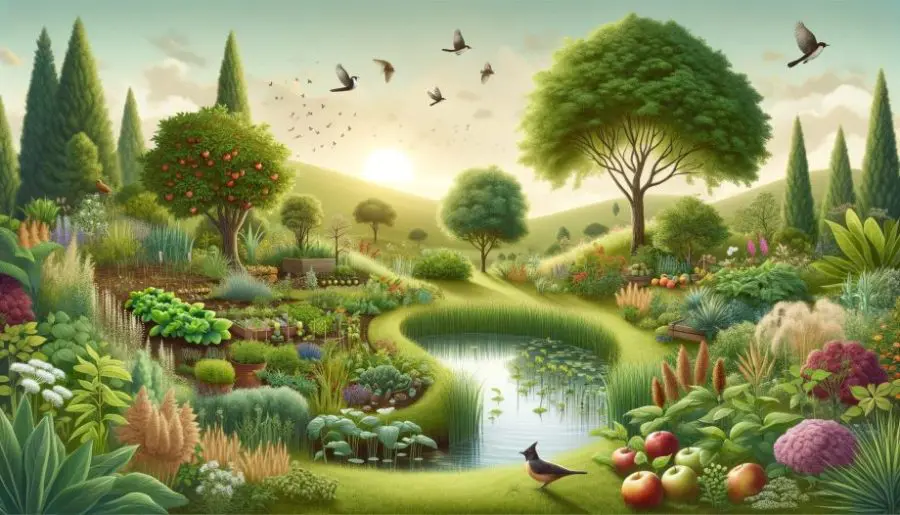
Permaculture is a philosophy of living in harmony with the natural world, by observing and mimicking the patterns and relationships found in nature.
It’s not just a gardening technique; it’s a design system for creating sustainable human environments that work with nature, rather than against it.
At the heart of permaculture is the desire to create permanent, sustainable cultures, and thriving ecosystems that benefit both the earth and its inhabitants.
This approach is adaptable, suitable for urban gardens as well as sprawling farms, and emphasizes the interconnectedness of all elements in an ecosystem.
Permaculture is an approach to land management and settlement design that adopts arrangements observed in flourishing natural ecosystems. It includes a set of design principles derived using whole-systems thinking. It applies these principles in fields such as regenerative agriculture, town planning, rewilding, and community resilience. The term was coined in 1978 by Bill Mollison and David Holmgren, who formulated the concept in opposition to modern industrialized methods, instead adopting a more traditional or “natural” approach to agriculture. Wikipedia
Principles of Permaculture
- Observation and Interaction: Understanding the natural environment and working with it, rather than imposing arbitrary designs.
- Energy Efficiency: Designing systems that maximize the use of natural energy sources, reducing reliance on fossil fuels.
- Diversity and Redundancy: Encouraging biodiversity and multiple elements serving the same function to ensure resilience.
- Sustainable Resource Use: Focusing on renewable resources and minimizing waste.
- Integration Rather Than Segregation: Designing elements to work together synergistically.
- Small and Slow Solutions: Building systems gradually, observing and adapting as they evolve.
Implementing Permaculture
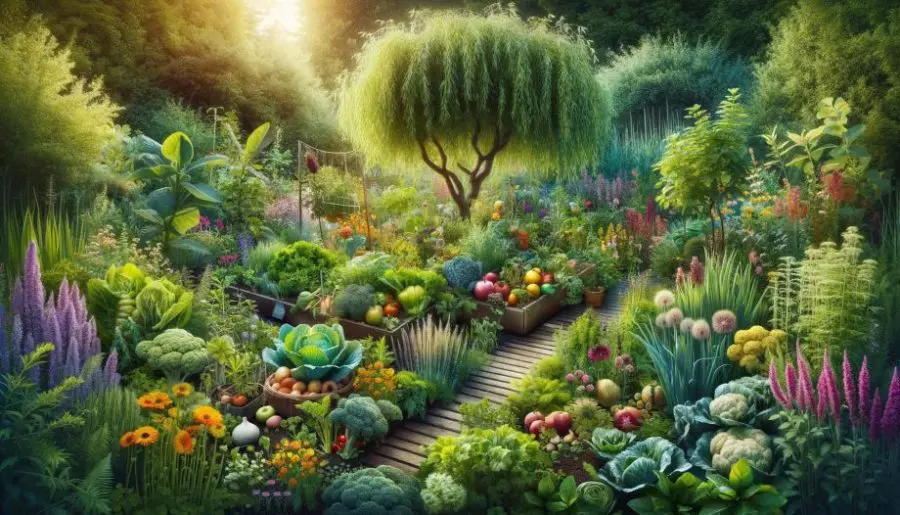
- Designing a Permaculture Garden: Creating a garden that mimics natural ecosystems, with layers of vegetation and a variety of species.
- Water Management: Innovative approaches to water collection, storage, and distribution, like swales and rain gardens.
- Building with Natural Materials: Using locally sourced, sustainable building materials for construction projects.
- Community Involvement: Permaculture often involves building community connections and sharing resources and knowledge.
Challenges in Permaculture
- Learning Curve: Understanding and applying permaculture principles can be complex and requires a significant amount of learning.
- Initial Setup and Investment: Establishing a permaculture system can require upfront time and resource investment.
- Adaptation to Local Conditions: Permaculture designs must be adapted to local climate, soil, and ecological conditions.
Comparing Homesteading and Permaculture: Similarities and Differences
While homesteading and permaculture share common goals of sustainability and self-sufficiency, they approach these objectives through different methodologies and philosophies.
Understanding the nuances of each can help in choosing the path that aligns best with one’s lifestyle and goals.
Similarities between Homesteading and Permaculture
- Focus on Sustainability: Both aim for sustainable living practices, reducing reliance on external systems and resources.
- Connection with Nature: Homesteading and permaculture both emphasize a deep connection and harmony with the natural environment.
- Self-Sufficiency Goals: The core objective of both approaches is to achieve a level of self-sufficiency in food production and living needs.
Key Differences
- Scope and Approach: Homesteading is more task-oriented, focusing on individual skills and self-reliance, whereas permaculture is a holistic design philosophy emphasizing ecosystems and sustainability.
- Community Involvement: Permaculture often involves a stronger focus on community cooperation and shared knowledge, while homesteading can be pursued more independently.
- Implementation and Timeframe: Homesteading practices can often be implemented more quickly, but permaculture designs, while taking longer to establish, offer long-term sustainability.
Integrating Homesteading and Permaculture

- It’s possible to integrate aspects of both philosophies, using permaculture principles to design a homestead or incorporating homesteading practices into a permaculture setup.
- The choice between homesteading and permaculture, or a combination of both, depends on personal preferences, available resources, and long-term goals.
How To Choose
When considering a more sustainable lifestyle, one often encounters the terms “homesteading” and “permaculture.”
Both offer paths toward self-sufficiency and environmental harmony, but they differ in philosophy and practice.
Making the right choice depends on several factors including personal goals, lifestyle preferences, and available resources.
Homesteading: A Path to Self-Reliance
Individualistic Approach: Homesteading is for those who enjoy the independence of creating and managing their own food sources.
It is a hands-on lifestyle, often involving farming and animal husbandry.
Space and Resources: This choice is best if you have access to enough land to cultivate crops and raise livestock. It demands significant time and physical effort.
Lifestyle Compatibility: Homesteading suits those who are comfortable with a more solitary, labor-intensive lifestyle, emphasizing self-reliance and practical skills.
Permaculture: Working with Nature
Ecological Design: Permaculture focuses on creating sustainable ecosystems. It involves understanding and working closely with natural processes and patterns.
Community and Holism: If you’re interested in a community-oriented approach, permaculture offers the opportunity to work collaboratively, emphasizing ecological balance.
Aligning with Nature: This option is ideal for those who wish to deeply integrate their lifestyle with environmental principles, often requiring less space than traditional homesteading.
Blending Both Paths
Hybrid Approach: You don’t have to choose strictly one or the other. Many find a balance, combining elements of both homesteading and permaculture to suit their unique situation and goals.
Personalization: Your journey towards sustainable living can be highly individualistic, shaped by your personal preferences, environmental concerns, and practical circumstances.
In conclusion, whether you lean towards homesteading or permaculture, or a mix of both, depends on your aspirations for self-reliance, ecological harmony, and the nature of your living situation.
Each path offers unique rewards and challenges in the pursuit of sustainable living.
FAQs: Homesteading and Permaculture
Q: Can permaculture principles be applied in an urban setting?
A: Absolutely! Permaculture principles are adaptable to any scale, including urban environments. Techniques like vertical gardening, balcony gardens, and rooftop rainwater harvesting make permaculture gardens feasible even in limited spaces.
Q: How much land is needed to start homesteading?
A: Homesteading doesn’t require a specific amount of land. It’s more about the efficient use of whatever space you have, whether it’s a backyard garden or several acres. The key is to start small and expand as you gain experience and confidence.
Q: Is homesteading financially sustainable?
A: Homesteading can be financially sustainable, especially when it leads to reduced living expenses and potential income from selling surplus produce. However, the financial aspect depends on various factors like location, the extent of self-sufficiency, and initial investments.
Q: How do I start learning about permaculture?
A: To start learning about permaculture, you can read books, attend workshops, or join local permaculture groups. Online resources, including courses and forums, are also valuable for gaining knowledge and connecting with experienced practitioners.
Q: What are the legal considerations for homesteading?
A: Legal considerations for homesteading include zoning laws, building codes, water rights, and regulations related to livestock and crop production. It’s essential to research and comply with local laws and regulations in your area.
Q: Can permaculture and homesteading coexist?
A: Yes, permaculture and homesteading can coexist and complement each other. Permaculture principles can enhance the sustainability and efficiency of a homestead, while homesteading practices can be integrated into a permaculture design.
Conclusion: Embracing a Sustainable Future

In summary, homesteading and permaculture offer two enriching paths toward a more sustainable and self-sufficient lifestyle.
While homesteading focuses on individual self-reliance and skill-based tasks, permaculture provides a holistic approach to living in harmony with nature.
Both paths share the common ground of sustainability, yet they cater to different preferences and situations.
The Flexibility of Homesteading and Permaculture
The beauty of these practices lies in their flexibility and adaptability.
Whether you have a small urban garden space or expansive rural land, elements of both homesteading and permaculture can be incorporated to suit your environment and goals.
By embracing either or both of these practices, individuals can contribute to a healthier planet, foster community connections, and cultivate a deeper relationship with the natural world.
Sustainable Living for a Better Future
As we face global environmental challenges, the principles of homesteading and permaculture offer practical, actionable steps toward a more sustainable future.
They remind us that every small effort counts and that the journey toward self-sufficiency and ecological harmony can be as rewarding as the destination.

